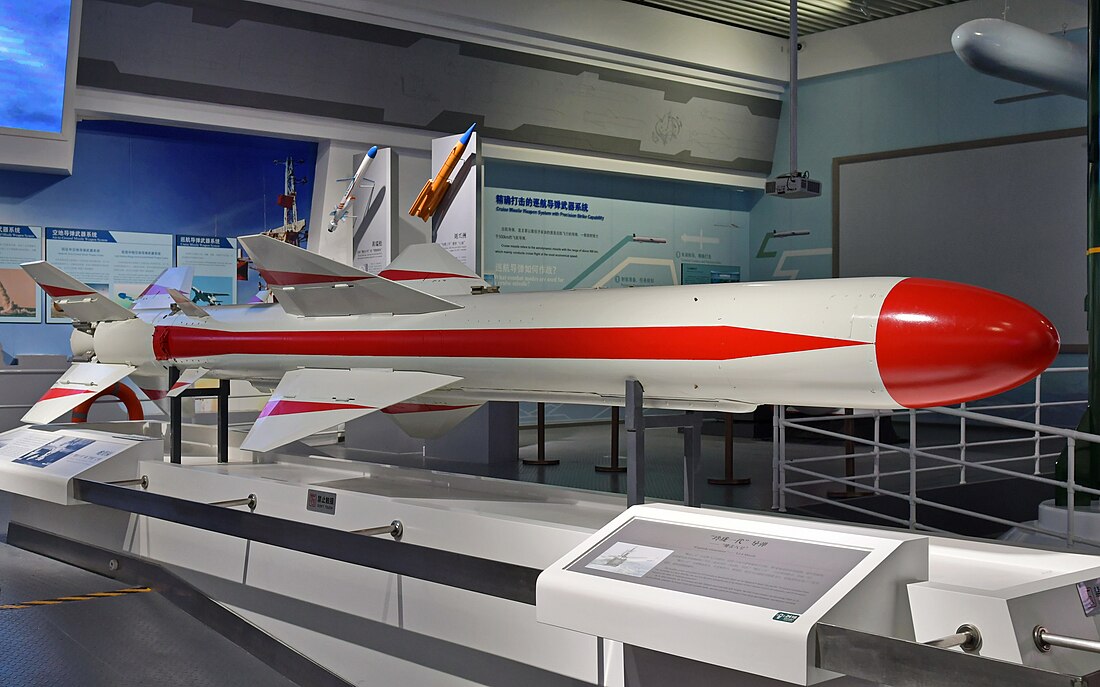Top Qs
Timeline
Chat
Perspective
YJ-8
Anti-ship missiles From Wikipedia, the free encyclopedia
Remove ads
The YJ-8 (Chinese: 鹰击-8; pinyin: yingji-8; lit. 'eagle strike 8'; NATO reporting name: CSS-N-4 Sardine) is a Chinese air and surface-launched subsonic anti-ship cruise missile. It is manufactured by the China Aerospace Science and Industry Corporation (CASIC) Third Academy.[3]
The YJ-8 was developed into air-launched (YJ-81) and submarine-launched (YJ-82) variants.[3]
Remove ads
Description
The YJ-8 is either based on, or is a heavily modified copy of, the MM38 Exocet; the two missiles share virtually identical operational profiles. The replication of the MM38's "revolutionary flight profile" in less than ten years and with an immature industrial base strongly suggests that China had access to proven technology.[4]
The YJ-8 was a "radical departure" from China's first anti-ship missiles derived from the P-15 Termit. The YJ-8 carried a smaller warhead, but had the same range and speed while being significantly smaller and lighter.[4]
Remove ads
Development
The development of the YJ-8 was approved in late-1976 following a few years of encouraging work on solid-fuel rockets. According to a 1991 Aerospace China article, development of the missile's engine began in 1978, and flight testing was completed in 1985. The YJ-8 reach initial operating capability in the People's Liberation Army Navy in 1987, the same year the export version—the C-801—was announced.[4]
CASIC received the first National Science and Technology Advancement Award for development of the YJ-8 in 1988.[5]
Remove ads
C-801
The C-801 is the export version of the YJ-8.[4][3] The C-801 was not marketed after 2003.[4]
Variants
Operators
- Myanmar Navy, C801[8]
- Royal Thai Navy, C-801[4]
- Yemeni Navy, C-801[1]
References
Wikiwand - on
Seamless Wikipedia browsing. On steroids.
Remove ads

